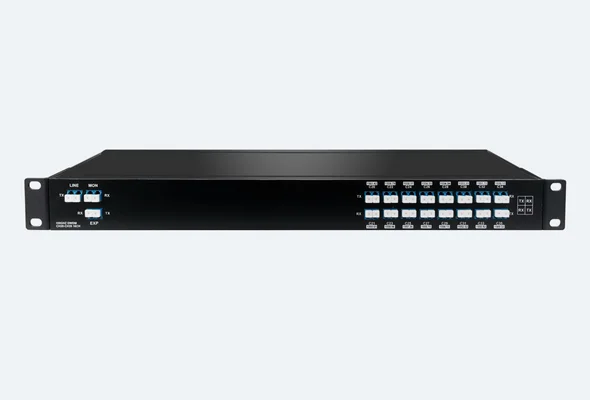- This topic is empty.
-
AuthorPosts
-
16/08/2024 at 18:56 #84673
In the rapidly evolving field of optical communications, Dense Wavelength Division Multiplexing (DWDM) stands out as a transformative technology that allows for the efficient and effective transmission of data over fiber optic networks. Among the critical components that make DWDM systems viable are demultiplexers, which play a pivotal role in separating multiplexed wavelengths at the receiving end. This article WDMLight delves into the role and key features of the 4 CH DWDM demultiplexer in modern optical networks.

The Role of the 4 CH DWDM Demultiplexer
The primary function of a 4 CH DWDM demultiplexer is to separate four distinct wavelengths from a multiplexed optical signal. This process is crucial for the proper functioning of DWDM systems, as it allows each individual data stream to be routed to its respective receiver or processing unit. The 4 CH DWDM demultiplexer achieves this by utilizing advanced filtering technologies that can isolate specific wavelengths with high precision.
The demultiplexer typically uses thin-film filters, arrayed waveguide gratings (AWGs), or other photonic devices to perform the separation. These components are engineered to have precise wavelength selectivity and low insertion loss, ensuring minimal signal degradation. The demultiplexer's role is analogous to that of a postal sorter that directs incoming mail to the correct recipients based on their addresses, ensuring that each data stream reaches its intended destination.
In a typical DWDM setup, the demultiplexer is paired with an optical amplifier to boost the signal strength before separation. This is necessary because optical signals attenuate as they travel through the fiber, and amplification ensures that the demultiplexed signals are strong enough for further processing. The 4 CH DWDM demultiplexer is thus an essential part of the optical network's front end, enabling efficient and reliable data transmission.
Key Features of the 4 CH DWDM Demultiplexer
A typical 4 CH DWDM demultiplexer boasts several key features and specifications that make it an indispensable component in optical networks:
Wavelength Range
The device is designed to operate within the standard DWDM wavelength range, typically from 1525 nm to 1565 nm. This range, known as the C-band, is widely used in telecommunications due to its low loss and high efficiency. The C-band offers a good balance between attenuation and dispersion, making it ideal for long-distance communication.
Channel Spacing
The 4 CH DWDM demultiplexer typically has a channel spacing of 100 GHz or 200 GHz, which corresponds to approximately 0.8 nm or 1.6 nm in wavelength terms. This spacing ensures minimal interference and crosstalk between adjacent channels, allowing for high-density data transmission without compromising signal integrity.
Insertion Loss
A crucial parameter for any demultiplexer is the insertion loss, which refers to the amount of signal power lost during the demultiplexing process. High-quality 4 CH DWDM demultiplexers have low insertion losses, often below 3 dB, ensuring efficient signal transmission. Low insertion loss is essential for maintaining signal quality, especially in long-haul applications where signal strength is critical.
Isolation
Channel isolation is another important feature, referring to the ability of the demultiplexer to prevent leakage of signals from one channel to another. High isolation levels, typically above 30 dB, are necessary to maintain signal integrity and reduce crosstalk. Good isolation ensures that each channel operates independently, minimizing the risk of interference and signal degradation.
Temperature Stability
Optical components must operate reliably across a range of temperatures. The 4 CH DWDM demultiplexer is designed to perform consistently from -40°C to +85°C, making it suitable for various environmental conditions. This temperature stability ensures that the demultiplexer can function effectively in different climates and operating environments, from underground conduits to outdoor installations.
The 4 CH DWDM demultiplexer is a critical component in the realm of optical communications, playing a vital role in enhancing the capacity and efficiency of fiber optic networks. Its ability to separate multiple wavelengths with high precision ensures the smooth transmission of vast amounts of data, meeting the ever-growing demands of modern communication systems.
As technology continues to advance, the capabilities of the 4 CH DWDM demultiplexer are set to expand, paving the way for even more robust and scalable optical networks. Whether in telecommunications, data centers, enterprise networks, or metropolitan area networks, the 4 CH DWDM demultiplexer remains an indispensable tool for achieving high-speed, reliable data transmission.
https://www.wdmlight.com/16-8-4-2CH-DWDM-Mux-Demux.html
http://www.wdmlight.com
WDMLight -
AuthorPosts
- You must be logged in to reply to this topic.